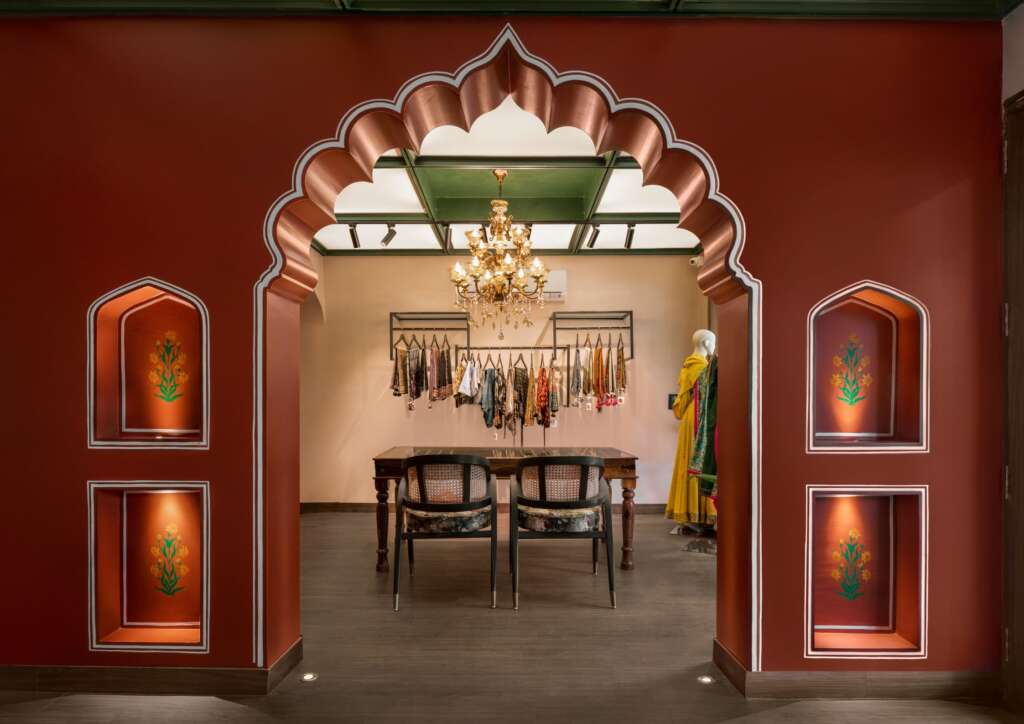Share This Article
In the heart of Gurugram’s buzzing Galleria Market lies a boutique that doesn’t just display fashion—it stages an immersive cultural experience. Rang Haveli, designed by the thoughtful minds at LAD Studio, is a rich blend of Indian heritage and contemporary spatial drama. At first glance, it’s an ode to maximalism—but look deeper, and it reveals layers of symbolism, storytelling, and spatial choreography rooted in tradition.

This bespoke retail space for designer Surraj Kathuria draws inspiration from the architectural spirit of the Indian haveli. The journey begins even before one enters the store—through a lush approach lined with flowering greens and sacred tulsi planters. A quiet nod to domestic rituals, the threshold or dehleez opens into a sequence of spaces that feel both intimate and ceremonial.
The store’s plan takes cues from traditional Indian architecture, organizing zones through galleries connected by pointed and multi-foliated arches. Niche detailing, handmade Pichwai paintings, and an artful use of Mughal miniatures turn every corner into a narrative in itself. A chowk forms the soul of the store—a courtyard-like space illuminated by a ceiling hung with brass bells that gently punctuate the air with their shimmering presence.

Materiality anchors the design. Rough kadappa flooring lends a raw, earthy touch while mirrored niches, ornate wallpaper, and fabric ceilings elevate the sensory drama. The designer’s extensive brass artefact collection adorns the interiors, reinforcing the space’s personality without overindulgence. From monolithic wooden displays to glass-window peeks revealing couture-clad mannequins, every detail is crafted for immersion.

At the heart of this experiential design is LAD Studio—a multidisciplinary firm co-founded by Bharti Sikri and Chander Kaushik, known for its rooted, research-driven approach to architecture and interiors. With projects spanning boutique residences, adaptive reuse, and public spaces, the studio has carved a niche for weaving cultural context into modern design narratives. Their belief that design must emotionally connect with users while respecting environment and legacy is evident in the spatial poetry of Rang Haveli.
This boutique isn’t just a shopping destination—it’s a celebration of textures, traditions, and transitions. In a world rushing toward minimalism, Rang Haveli pauses to remind us of the richness of our own stories—stitched together in arches, artefacts, and memories.










